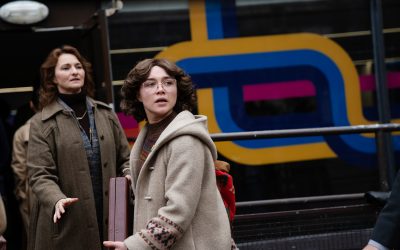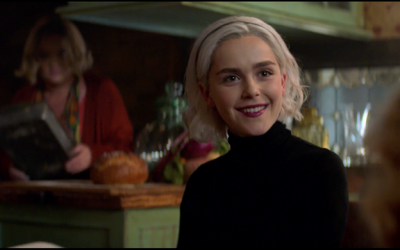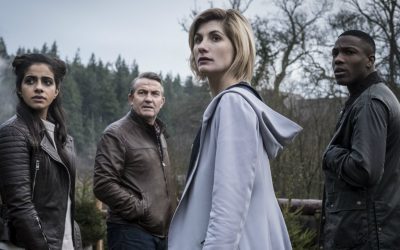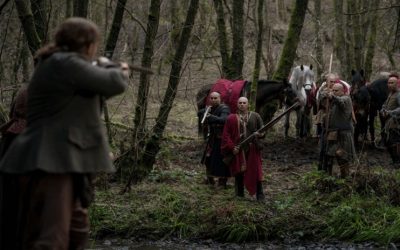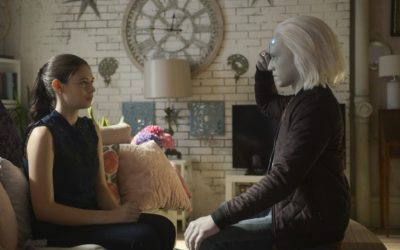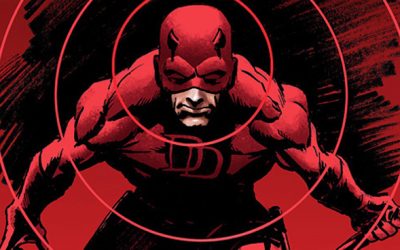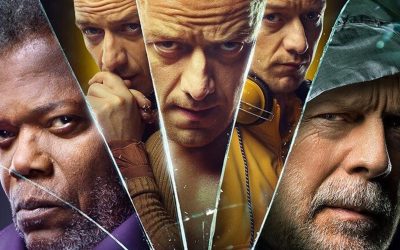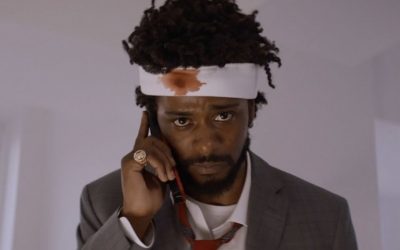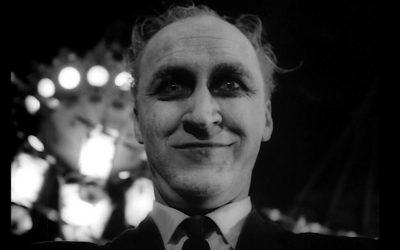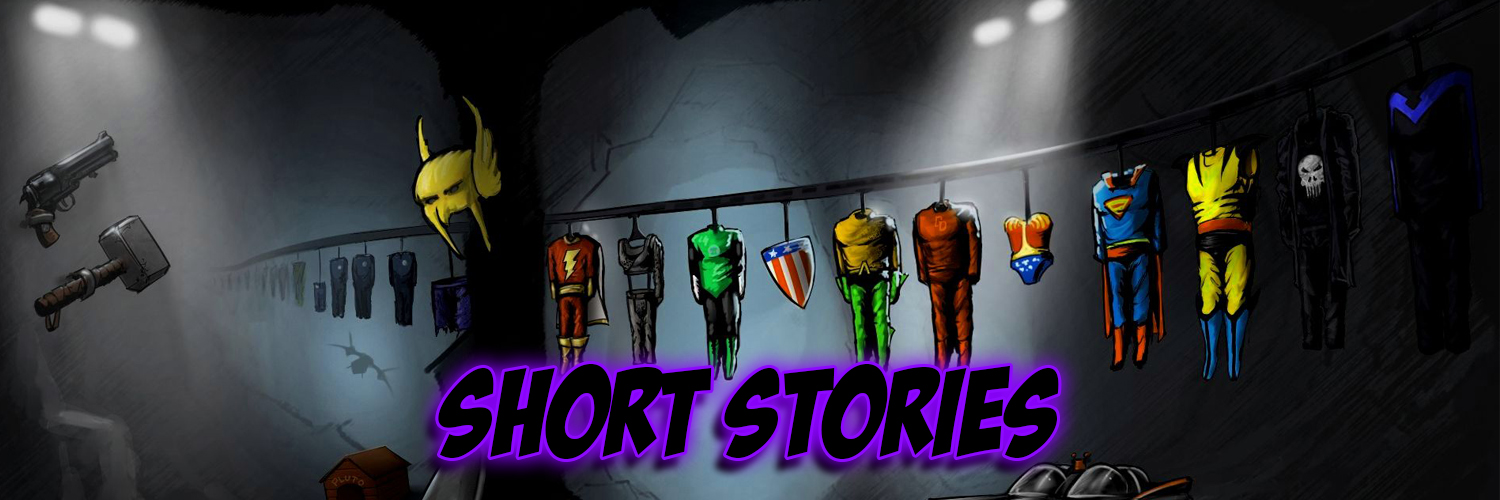
Doctor Sleep: the sequel to The Shining has wrapped
Kirsten Howard
Dec 3, 2018
Haunting Of Hill House maestro Mike Flanagan is behind the sequel…
Doctor Sleep is now heading into post-production, as director Mike Flanagan has officially wrapped filming.
Flanag…
The Little Drummer Girl episode 6 review
Visually arresting and ambitious, Florence Pugh’s performance will be The Little Drummer Girl’s legacy. Spoilers…
This review contains spoilers.
“I hope it was worth it,” were Khalil’s last words to Charlie. So, was it?
Thanks to Charlie’s bravura performance, Marty’s scheme took Mossad “closer than anyone” to dismantling the Palestinian terror cell. Using intel Charlie had gathered in Lebanon, the training camp and mountain community were both destroyed. Key players in the attacks—Salim, Anna, Khalil, Fatmeh, Rossino, Helga, Mesterbein—were killed. Yet, after Khalil’s death, the bombings continued.
So, was it worth it? With Khalil now a martyr, parades no doubt being held in his honour, and bombs still targeting Israeli intellectuals, the finale left us considering what Marty’s bold plan really achieved.
Stepping outside of the drama, one answer is that it gave us six hours of the handsomest TV we’ve seen in an age, and cemented Florence Pugh’s status as one of the most talented actors working today.
Pugh has been a revelation as Charlie. Funny and sad and tough and vulnerable, often all in the space of the same line, she’s been the stand-out in a strong cast (Charif Ghattas was excellent as Khalil in this finale). Across the series, Pugh has held her own against the quiet—and, admittedly, often pretty loud—intensity of Michael Shannon. She even made the usually striking Alexander Skarsgard fade into the scenery. Opposite Charlie’s vibrancy, Gadi felt at times like a very tall, very tragic anglepoise lamp.
Not watching Pugh work every week is my one regret about The Little Drummer Girl coming to an end. Not that it’s been a slog, but its affectations—the monologues to camera, the fiction/reality repetitions—have leaned towards the ponderous rather than the thrilling. The ambition to complicate the international spy genre with lofty themes and provocative questions about cultural perspective (both Marty and Khalil knew they played the role of the devil to each other) and anti-Semitism is wholly admirable, but for viewers, none of that exactly equals… fun.
If you wouldn’t have come here for fun, you’d certainly have come for style. Director Park Chan-wook and cinematographer Woo-hyung Kim, along with Maria Djurkovic’s production design have told this story with intense beauty. The locations, costumes, props, and framing have all looked memorable and exquisite.
To take one shot among hundreds that shows the level of patient attention shown to detail here, see Charlie and Marty walking away from their meeting towards the end of the episode. The Escher-like steps in the geometric house lead both distinct silhouettes off in opposite directions, on different levels. It’s a final goodbye. Like Gadi, Charlie has resigned from Marty’s troupe. She’s chosen romance and self-discovery with the man who saved her life over another exhilaratingly dangerous role from the man who was willing to sacrifice it.
That romance, beautiful and complex as it was, fell short of being involving. Frankly, I’ve had bruises I’m more emotionally invested in watching develop than the love affair between Charlie and Gadi, but there was plenty going on elsewhere to keep you watching.
Never less than arresting to look at, The Little Drummer Girl told its difficult, convoluted story with poise and ambition. Its legacy though, feels as though it’ll be as a calling card for Florence Pugh. Writers, create her roles as rich as this one, and producers, fall over yourselves trying to hire her.
Read Louisa’s review of the previous episode here.
Chilling Adventures Of Sabrina season 2 trailer and release date
April will bring us Part 2 of Sabrina’s dark magic adventures…
Nine new episodes of Chilling Aventures Of Sabrina will hit Netflix UK in April, as the first and second seasons were filmed back-to-back! We’ve also got a Christmas special to look forward to, landing on the streaming service on 14th December.
“We went straight into the second season from the first and it’s been really so exceptionally fun to film, especially given the fact that I feel like we’re already in such a rhythm from coming out of the first season that to jump right into the second one was really, really fun and just a great opportunity to keep the momentum going,” star Kiernan Shipka told Bloody Disgusting. “We definitely… Sabrina definitely changes and shifts a lot. Her growth is very evident and the second season definitely has a different spin on it than the first season. They’re very different from each other.”
Here’s a first preview of season 2…
Chilling Adventures Of Sabrina season 2 trailer
Chilling Adventures Of Sabrina season 2 release date
Part 2 will arrive on Netflix UK on 5th April, 2019.
Chilling Adventures Of Sabrina season 2 cast
Buffy and Angel alum Alexis Denisof will reportedly be reprising his role from the upcoming Christmas special in season 2 as Miss Wardwell’s clueless boyfriend, Adam Masters.
Kiernan Shipka, Miranda Otto, Lucy Davis, Ross Lynch, Michelle Gomez, Chance Perdomo, Jaz Sinclair, Richard Coyle, Tati Gabrielle, Adeline Rudolph, Abigail Cowen, Lachlan Watson, Bronson Pinchot, and Gavin Leatherwood will all return for Part 2.
More as we get it.
Doctor Who series 11’s Classic Who influences
Andrew Blair
Dec 4, 2018
Which lessons might Doctor Who series 11 have learned from Classic Who? Andrew considers some of the similarities between now and then…
Doctor Who series eleven has echoed aspects of …
Outlander season 4 episode 5 review: Savages
Kayti Burt
Dec 3, 2018
Claire and Jamie face the unjust consequences of the hierarchy that gives them power in the latest season 4 Outlander episode. Spoilers…
This review contains spoilers. See related&…
Supergirl season 4 episode 8 review: Bunker Hill
Delia Harrington
Dec 3, 2018
Nia Nal comes into her own in an action-packed episode of Supergirl directed by Kevin Smith. Spoilers ahead in our review…
This review contains spoilers. See related
…
Daredevil: what next for the Man Without Fear?
James Hunt
Dec 3, 2018
Netflix has accomplished what the Kingpin couldn’t and killed off Daredevil. But is this the end for the Man Without Fear?
When Daredevil launched four years ago as part of the Defenders …
Glass interview: M Night Shyamalan talks Unbreakable trilogy
Rosie Fletcher
Dec 3, 2018
Bruce Willis, Samuel L Jackson and James McAvoy unite for the final part of the comic-book thriller trilogy
In 2000 M Night Shyamalan released his twisty comic-book thriller Unbreakabl…
Sorry To Bother You review: a potent, prickly debut
Finally arriving in UK cinemas, Sorry To Bother You is a bold and bonkers satire with a lot to say. Here’s our verdict
It was always going to be difficult adjusting our expectations for a film with as much early ballyhoo as Sorry To Bother You…
Carnival Of Souls: the strange story behind the greatest horror movie you’ve never seen
Dancing Mormon ghosts, dodgy distributors and a barely-there budget couldn’t stop Herk Harvey from crafting a creepy modern classic
“Anybody that produces a film runs into problems when they come to distribution,” said director Herk Harvey in 1983, somewhat understating the reality of the trials he endured while making his 1962 directorial debut, Carnival Of Souls. Not just distribution, but budget, filming permissions and location difficulties all contributed to his film’s unconventional birth. Perhaps the strangest thing about it, though, is that despite a legendarily problematic production, Harvey succeeded in crafting a horror film with such enduring and haunting power, it inspired the likes of George A. Romero, David Lynch and M. Night Shyamalan, and continues to earn new fans today.
It all began in 1961. While driving back from Los Angeles to his home in Lawrence, Kansas, Harvey glimpsed a shadowy ruin on the outskirts of Salt Lake City. Pulling over to explore, he discovered the Saltair Pavilion, an abandoned ballroom that had a bewitching air of faded grandeur. At the time a payroll director at Centron – which produced educational and industrial films – Harvey was looking to break into features, and the pavilion struck a spark of creativity in his mind. “The whole place looked sort of weird,” he said. “I just catalogued it away.”
When he got home, Harvey called up his friend and fellow Centron worker John Clifford, and asked if he’d write a feature based around the pavilion. “The last scene, I told him, had to be a whole bunch of ghouls dancing in that ballroom,” remembered Harvey. “The rest was up to him.”
Completing the script in just three weeks, Clifford dreamt up the story of church organist Mary Henry (Candace Hilligoss), who survives a car accident after a drag race gone wrong. But as she attempts to get on with her life and takes a job in another town, she can’t shake a feeling of wrongness after the crash – a feeling that manifests in the form of a white-faced figure who follows her wherever she goes. But who is ‘the Man’, and what does he want?
Assembling a crew of just five – himself, cinematographer Maurice Prather, editor Dan Palmquist, assistant director Reza Badiyi and production manager Larry Sneegas, all of them his buddies at Centron – Harvey managed to generate a budget of $33,000 after approaching local Kansas businessmen, who invested in packs of the production’s stock. And he found his lead in the form of up-and-coming actress Candace Hilligoss, who turned down a role in Psychomania (1963) to star in Carnival Of Souls. “I was paid $2,000 for doing the film,” she later recalled. “It seemed like a fortune.”
Meanwhile, Harvey himself would play ‘the Man’, masterminding the character’s look by using white greasepaint on his face and wet salt in his hair for a crusty long-dead appearance. “That was part ego and more economics,” he explained of playing the role. “Mostly economics. When you’ve only got $17,000 cash, you get thrifty.”
Thriftiness was the name of the game as Harvey found cunning ways not only to save money but also film on location. On 18 September 1961, the first shooting day, he descended on the Kaw Bridge in Eudora, Kansas for the film’s drag race. Having promised he would cover the damages for the scene, which involved the car crashing through the side of the bridge, Harvey ended up footing a damages bill of just $17. He also paid $25 to a stranger to drive his van through an alley after a fleeing Hilligoss, and another $25 to a department store clerk who let them shoot a scene in a dressing room.
Finally, on 1 October 1962, Harvey and his crew arrived at the derelict Saltair Pavilion, where they proceeded to create the sequence that Harvey had first imagined for the film. Renting the ruins from the Salt Lake City Chamber of Commerce for just $50 – and tracking down the pavilion’s original technician to turn on the ballroom lights – he staged the film’s ghostly dance scene with the help of students from the Mormon School of Modern Dance.
Wrapping filming was only the beginning of the story, though. Harvey signed a seven-year rights agreement with LA distributor Herts-Lion, but Herts-Lion promptly assembled a bizarre and misleading ad campaign, asked Harvey to add in nude scenes (he refused), and oversaw nine minutes of cuts so that Carnival Of Souls could show as a drive-in double feature with The Devil’s Messenger. “I took off to do a series of seven industrial films in South America,” Harvey said. When he got back, he asked Herts-Lion to send him his royalties, and they mailed him a cheque. “It bounced,” he said. “I knew we were in trouble.”
In 1964, Herts-Lion shut its doors, but not before it inadvertently set the wheels in motion that helped Carnival Of Souls become a belated underground hit. The film’s broadcast rights were pimped out to 187 TV stations across America, and duly Carnival Of Souls ran and re-ran in late-night slots for the better part of a decade.
Slowly, its atmospheric, eerie and beautifully shot story earned a cult status among horror fans, who noted its arthouse inspirations (Ingmar Bergman, Jean Cocteau), and the film became the inspiration for the likes of Night Of The Living Dead, David Lynch’s pasty-faced ‘Mystery Man’ in Lost Highway, The Sixth Sense and even Insidious.
Happily, Harvey lived long enough to see his film enjoy success as a theatrical re-release in 1990 (he passed away from pancreatic cancer six years later). Carnival Of Souls remains his sole directing credit, which is a tragedy in itself, but his film has survived thanks to his considerable artistry, deft handling of understated horror, and an ethereal lead performance from Hilligoss. “Death keeps calling her back,” Harvey once said of his film’s protagonist, and the same certainly applies to his film, which continues to lure in viewers old and new.


